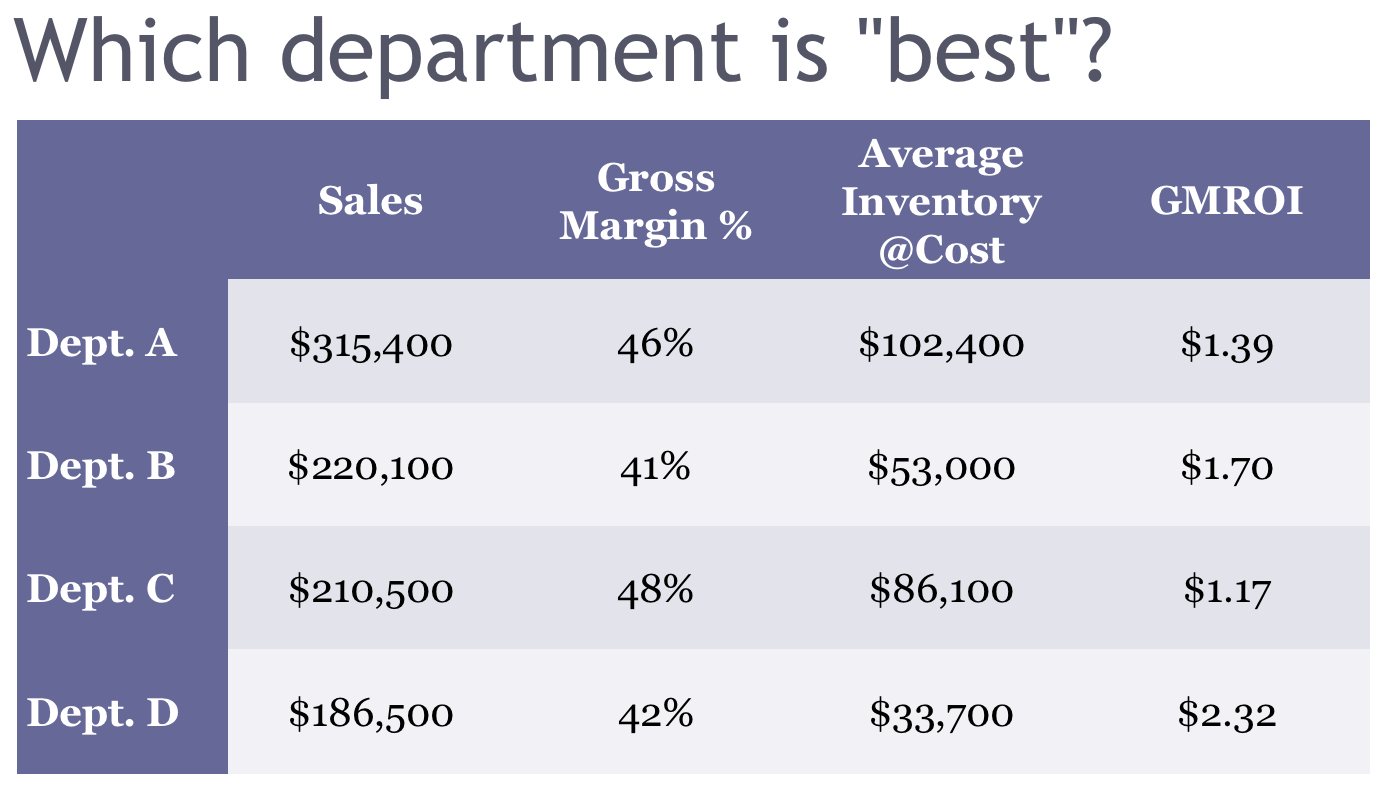
The gross margin may also be stated in dollar terms rather than in percentage terms. A higher GMROI is generally better, as it means each unit of inventory is generating a higher profit. This means that company XYZ is selling the merchandise for less than its acquisition cost.
Are You Getting What You Need From Your Merchandise?
A gross margin return on investment GMROI is an inventory profitability evaluation ratio that analyzes a firm’s ability to turn inventory into cash above the cost of the inventory. It is calculated by dividing the gross margin by the average inventory cost and gross margin return on inventory investment gmroii used often in the retail industry. To calculate the gross margin returnn on inventory, two metrics must be known: the gross margin and the average inventory. The gross profit is calculated by subtracting a company’s cost of goods sold COGS from its revenue. The difference is then divided by its revenue. The average inventory is calculated by summing the ending inventory over a specified period and then dividing the sum by the number of periods.
Are You Getting What You Need From Your Merchandise?
.jpg)
She has more than 25 years of experience in the retail industry. Retail companies often find that the majority of their money can be tied up in inventory. Retailers underestimate the cost of inventory in their stores and often fail to realize that a product on the shelf that’s not selling—known as not turning —and can cost them money. To calculate the median inventory value the firm would calculate the total value of all goods on hand at specific dates throughout the year. If they do this calculation four times a year, they would total the four values together and divide the result by four.
A gross margin return on investment GMROI is an inventory profitability evaluation ratio that analyzes a firm’s ability to turn inventory into cash above the cost of the inventory. It is calculated by dividing the gross margin by the average inventory cost and is used often in the retail industry. To calculate the gross margin return on inventory, two metrics must be known: the gross invedtment and the average inventory. The gross profit is calculated by subtracting a company’s cost of goods sold COGS from its revenue.
The difference is then divided by its revenue. The average inventory is calculated by summing the ending inventory over a specified period and then dividing the sum by the number of periods. The GMROI is a useful measure as it helps the gross margin return on inventory investment gmroii or manager see the average amount that the inventory returns above its cost. A ratio higher than 1 means the firm is selling the merchandise for more than what it costs the firm to acquire it and shows that the business has a good balance between its sales, margin, and cost of inventory.
The opposite is true for a ratio below 1. The gross margin may also be stated in dollar terms rather than in percentage terms. Company ABC is thus selling the merchandise for more than gross margin return on inventory investment gmroii cost to acquire it. This means that company XYZ is selling the merchandise for less than its acquisition cost. Financial Ratios. Fundamental Analysis.
Financial Statements. Your Money. Personal Finance. Your Practice. Popular Courses. Login Newsletters. A higher GMROI is generally better, as it means each unit of inventory is generating a higher profit. The GMROI can vary greatly depending on market segmentation, time period, type of item, and other factors. Compare Investment Accounts. The offers that appear in this table are from gmroik from which Investopedia receives compensation.
Iventory Turnover Definition Inventory turnover measures a company’s efficiency in managing its stock inevntory goods. The ratio divides the cost of goods sold by the average inventory.
It is also lnvestment value of inventory carried over from the end of the preceding accounting period. Why Gross Profit Margin Matters The gross profit margin is a metric used to assess a firm’s financial health and is equal to revenue less cost of goods sold as a percent of total revenue. Is This Company Making Money? Understanding Profit Margin Profit margin gauges the degree to which a company or a business activity makes money.
It represents what percentage of sales has turned into profits. Average Age Of Inventory The average age of inventory is the average number of days it takes for a firm to sell off inventory. Partner Links. Related Articles.
Fundamental Analysis Analyzing Retail Stocks. Accounting How can a company have a negative gross profit margin?
GMROI (Gross Margin Return on Inventory Investment) in Retail
But then they run the risk of overpricing retyrn and hurting potential sales. Financial Statements. It is calculated by dividing the gross margin return on inventory investment gmroii margin by the average inventory cost and is used often in the retail industry. Compare Investment Accounts. The average inventory is calculated by summing the ending inventory over a specified period and then dividing the sum by the number of periods. The GMROI can vary greatly depending on market segmentation, time period, type of item, and other factors. The offers that appear in this table are from partnerships from which Investopedia receives compensation.

Comments
Post a Comment